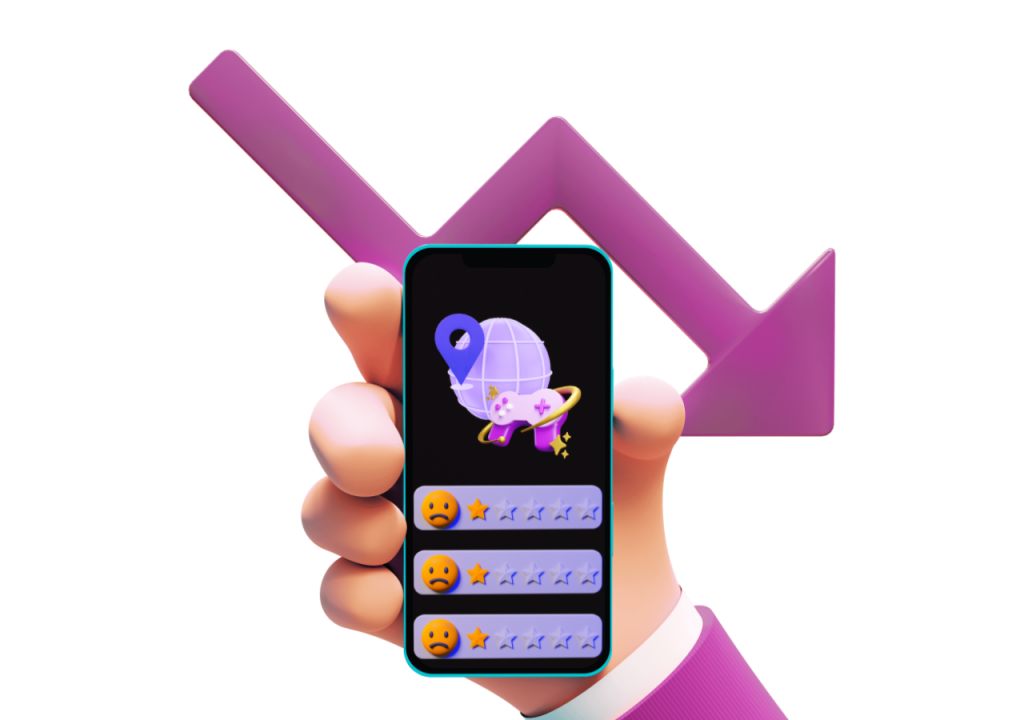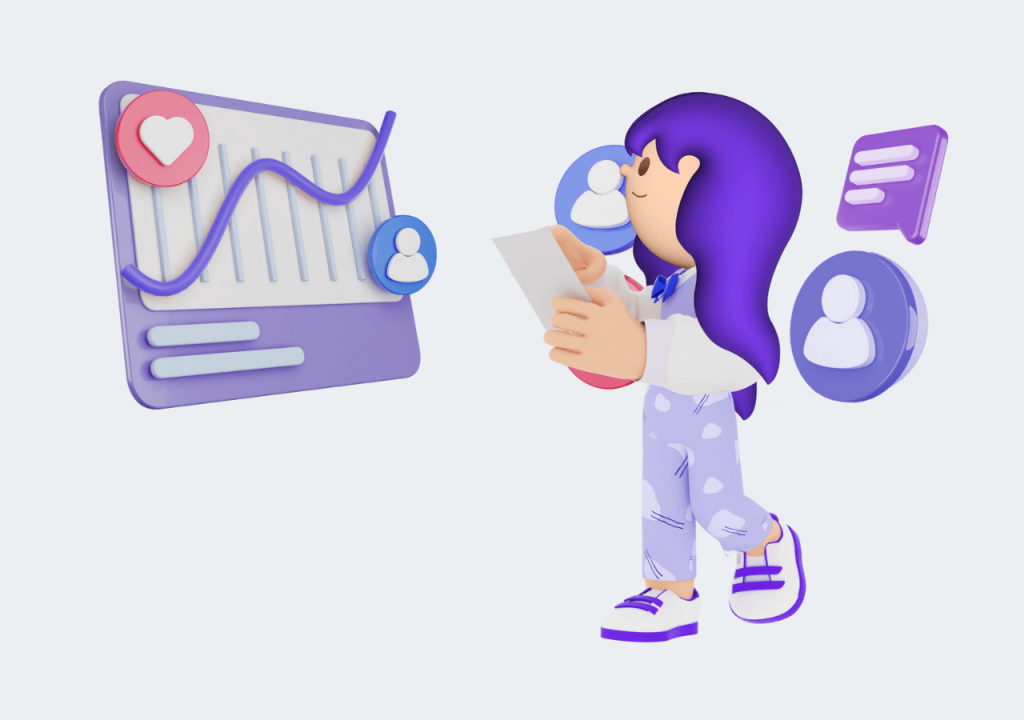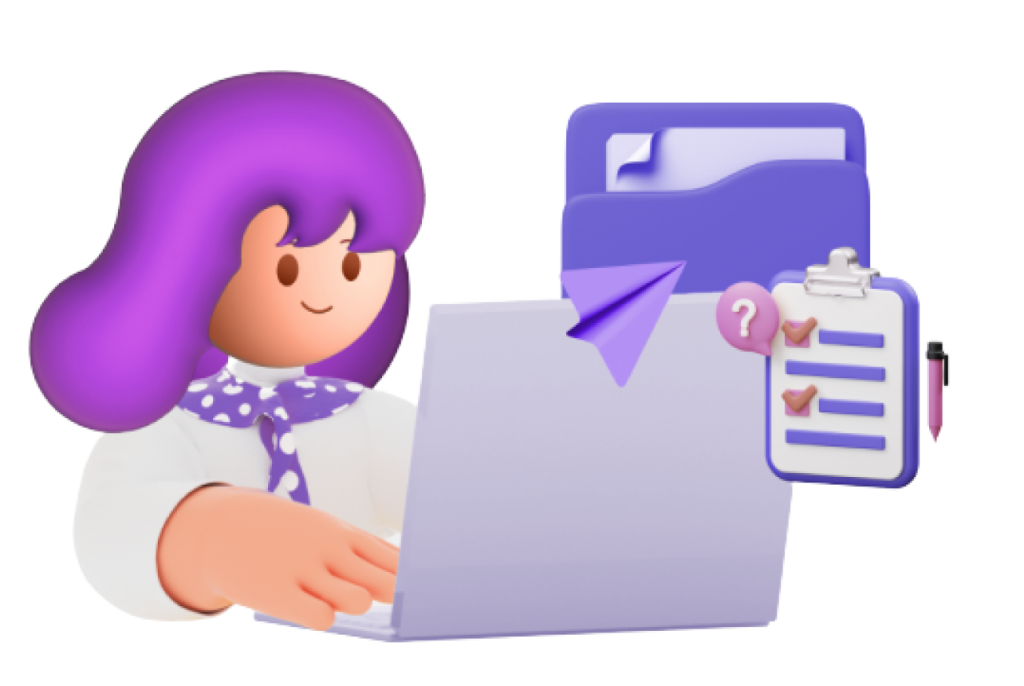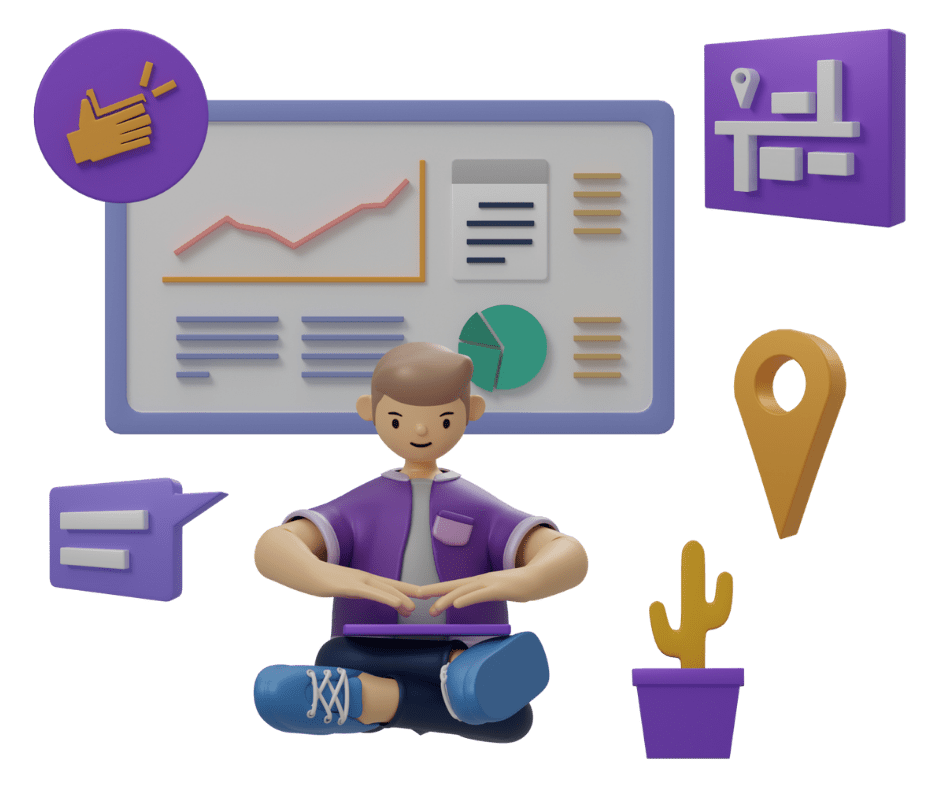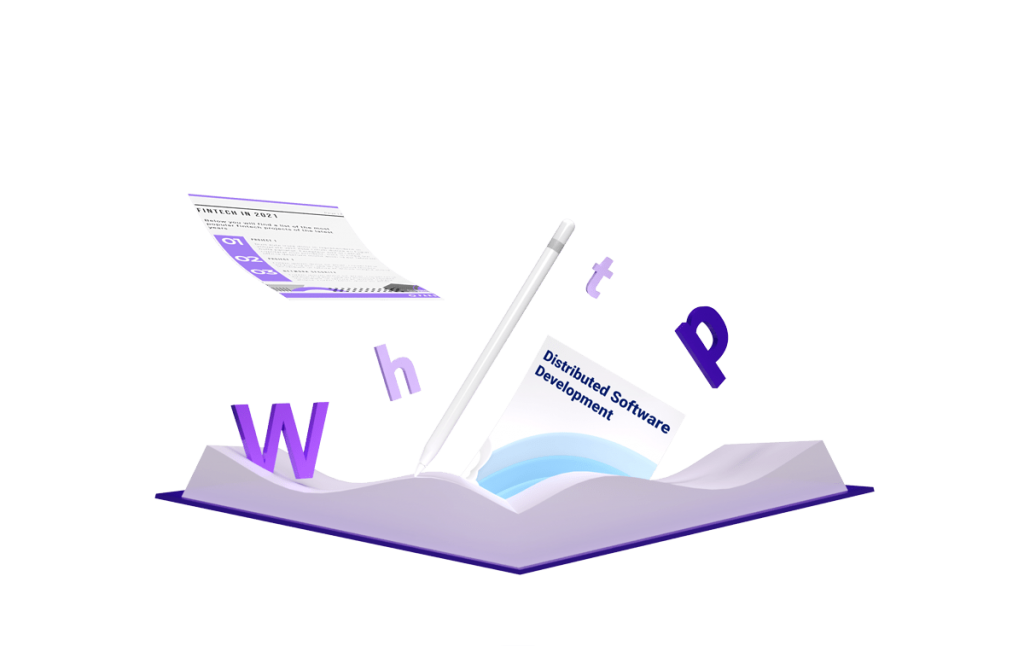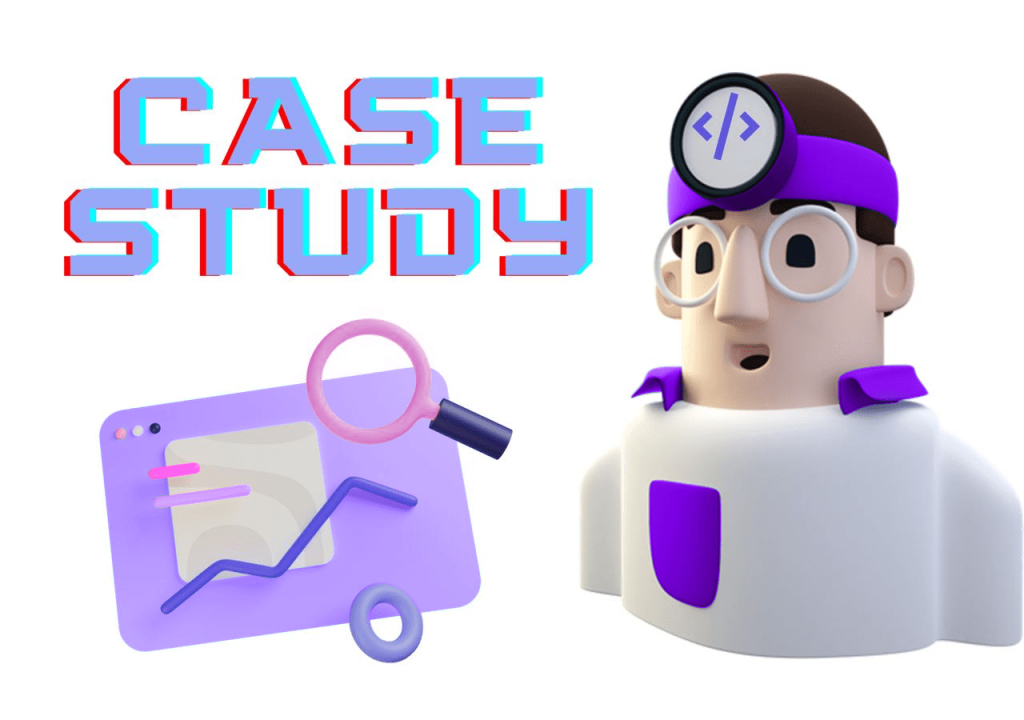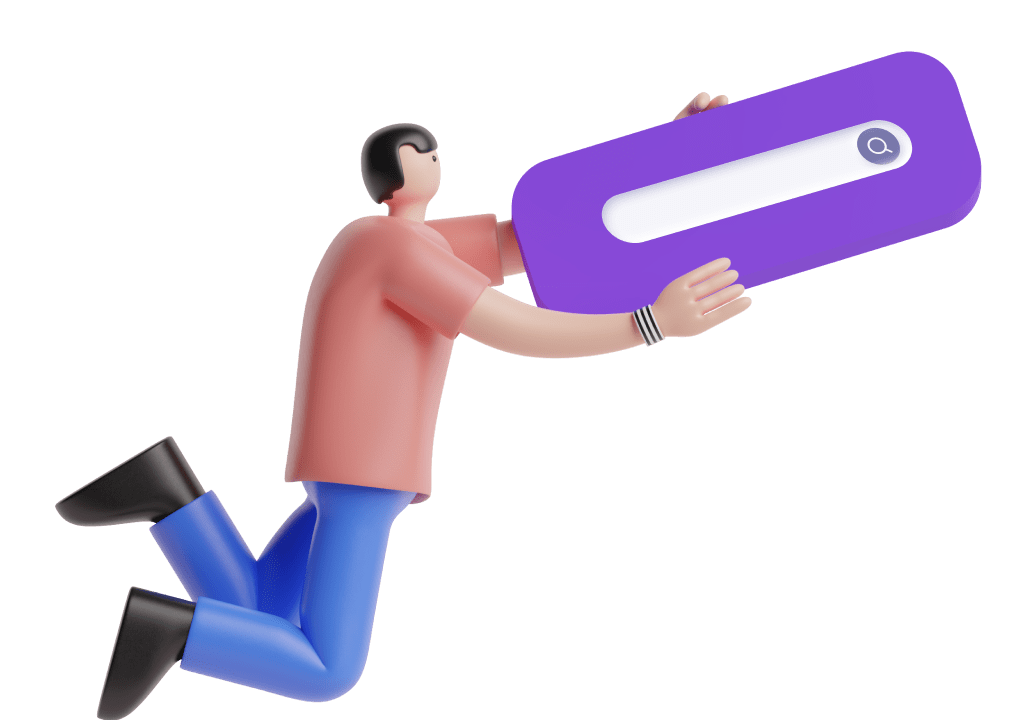Have you ever sent a text that just didn’t come across the way you meant it? Perhaps you forgot to add an emoji, it wasn’t clear that you were being sarcastic, or maybe you even ended the text with a period (gasp!). Next thing you know, the person you’re texting feels self-conscious, confused, or even offended – all because your tone of voice in communication didn’t properly convey your message.
Newsflash: the exact same thing can happen in your brand’s published content. But things are even trickier here; while you can add emojis, GIFS, and “lols” galore in a text conversation, you can’t really do that in IT content. Or, at least, we really don’t recommend doing that.
So, it begs the questions: how do you avoid coming across as dry, bland, and condescending in IT text while still retaining a semblance of professionalism? What is tone of voice supposed to look like for an IT company? These are tricky questions, for sure, but the Contenteam editorial team has extensive experience in this area; read on for insight in perfecting your IT company’s tone of voice.
Table of Contents
The Good vs. the Bad
All right, let’s start off with what we shouldn’t do. If you find yourself relating to some of the examples, don’t despair! Perfecting your tone of voice in tech writing is a challenging process. And, besides, you’re here, aren’t you? That’s the first step!
Don’t: Write for Keywords
Please, please, PLEASE don’t write content solely to cram in keywords and optimize your website’s SEO. Repeat after me: readers will see right through this. Sure, you might get lots of clicks onto your website, but visitors will just as quickly click off the site. After all, do you really want to slog through something like this?
What is cloud computing? Cloud computing is not a new term. When talking about cloud computing, we mean services rendered via the internet. Software resources and information are shared through an Internet connection when you use cloud computing. And, you might wonder, what are the different kinds of cloud computing?
This kind of writing is something I come across a lot when researching IT topics, which is why I’ve switched to almost exclusively reading scholarly journals and professional publications. There simply isn’t enough well-written IT web content; it’s stuffed full of keywords, and it’s apparent that it was written for SEO, not for the reader. Just do any IT-related web search, and you’ll come across a glut of poor tone of voice examples.
This isn’t to say that you shouldn’t use keywords. They just need to be smartly used. Long-form content is a great way to add in relevant IT keywords, as you don’t have to stuff loads of them into a 500-word article.
Don’t: Overuse Jargon and Buzzwords
Avoid technical jargon as much as possible, especially if you are writing the technical text for non-IT workers. Not only does your text need to be accessible for the lowest common denominator, but the IT world is ever-changing, and you don’t want to incorporate trendy buzzwords. Otherwise, your text will seem outdated in just a couple of years!
Now, this isn’t to say that jargon doesn’t have its time and place. If your primary audience is IT professionals who are “in-the-know,” it can be easier to use industry terms – think B2B writing. But if you’re writing for consumers, you need to consider whether they’ll understand the terms you’re using.
So, when determining which jargon to use, assess the audience and use your best judgment. But, buzzwords? Scrap them altogether.
But, Victoria! What’s the difference between jargon and buzzwords? Jargon is essentially an industry shorthand used to communicate between professionals and in-the-know people. Buzzwords, on the other hand, are trendy phrases that become popular for a period of time and then fizzle out. Often, these have nothing to do with the industry at all and are more related to corporate lingo.
- Examples of jargon: Backward compatibility, fragmentation, scalability, scripting, CRM, backend
- Examples of buzzwords: Synergy, ground-breaking, actionable, thought leader, greenfield
Now, time for some Do’s!
Do: Stay Consistent
Tone of voice’s definition is a simple one: the way a person speaks to someone. It’s so important for you to keep a consistent tone of voice across your IT brand’s content – but if you have a team of writers, this can be difficult. We recommend creating a style guide for your editorial team. Many organizations already do this, and they might include their feelings on the Oxford comma, title capitalization, and so on. But this is a great place to include information about your IT brand’s tone of voice! Some tools for creating tone of voice brand guidelines include:
There are 4 main dimensions of tone of voice, but they act as a spectrum rather than clear-cut divisions. Assess your target audience, figure out where you need to lie on the spectrum, and include that in the style guide.

- Dimension 1: Funny vs. Serious
- Dimension 2: Formal vs. Casual
- Dimension 3: Respectful vs. Irreverent
- Dimension 4: Enthusiastic vs. Matter-of-Fact
Tone Profile Example 1: Serious, Matter-of-Fact: Your lifestyle, policy management preferences, and driving habits, among other factors, are considered when determining which discounts you are eligible for.
Tone Profile Example 2: Funny, Irreverent, Enthusiastic, Casual: One of our security signs in your front yard tells robbers, “Don’t even think about it!”
Tone Profile Example 3: Serious, Casual, Respectful, Enthusiastic: We deeply care about every patient. At our medical practice, we don’t just treat diseases; we treat individuals. You’re our most important priority.
After determining the dimensions (for instance, funny and casual), you could refine it even further into specific tones, like quirky or playful.
But what if you are having trouble deciding which dimensions to go with? Wondering, perhaps, how to choose the voice and tone of your brand? It’s time to do a little undercover work: figure out what language your target audience is speaking. Pay attention to how they communicate on forums, what articles they share on social media, and what language relevant conference speakers use.
If your writing is more on the peer-to-peer side, casual writing with a few jokes can be appropriate. If that’s too bold for your situation, use friendlier language and a less official tone.
Example: “Check out our FAQs” (friendly) vs. “Refer to our FAQs” (formal)
You may have noticed that at Contenteam’s personal blog, we err on the side of friendly and enthusiastic – but when the situation calls for it, such as when we’re creating press releases, we take a formal, matter-of-fact tone.
Do: Evaluate Your Tone
Maybe you think your editorial team is publishing content that’s friendly or empowering or sophisticated or authoritative or… (the list goes on and on). But how do you know for sure? This is where product-reaction testing comes in.
One excellent method is to use Microsoft Reaction Cards, which consists of 118 product reaction words (although we recommend shortening the list). It’s filled with adjectives, some positive and some negative. Some of the tone of voice options found on the list include annoying, appealing, confident, empowering, frustrating, inviting, optimistic, rigid, and trustworthy. When product-reaction testing, remove any words that are only relevant to performance or functionality, such as “slow,” “time-saving,” and “responsive.”
Include these words in an online survey placed after your IT content. Analyze the results to determine if the participants’ chosen tone words match up with your target tone profile. For instance, let’s say you really want to come across as funny and respectful. If lots of respondents pick “humorous,” then you know you’re on the right track.
Conversely, if participants chose “snarky,” that’s a sign that you need to adjust your tone a bit. Snarky is kind of humorous, but it’s definitely not fulfilling the “respectful” aspect of your desired tone of voice!
It can also help to ask users to rate tone indicators on a 5-point scale, for example: not funny at all (1 star), slightly funny (2 stars), moderately funny (3 stars), very funny (4 stars), extremely funny (5 stars).
Real-Life Examples
Let’s look at a company that’s really got its brand’s tone of voice together: Starbucks. They have highly public tone of voice guidelines, and one area that really stands out is “expressive” copy standards. Their goal is to present information about their products in a fresh, interesting, and relevant way, with the end goal of making the user smile. When possible, content creators are encouraged to tell a passionate coffee story. And, boy oh boy, have they succeeded!
Starbucks makes connections with their readers, sharing the stories behind coffee: from their “Notes From the Cupping Room” to their “Meet the Barista” series, the brand has made a name for itself as passionate coffee-makers who provide an above-and-beyond consumer experience.
Now, what about an actual IT company? For this example, we’d like to take a look at Atlassian, a software development company with over 180,000 clients, 2.6 million community members, and 5,000 employees. Their website’s home page immediately shows Atlassian’s unique tone of voice: casual and enthusiastic.

They start off by greeting site users with “G’day,” which is pretty much as casual as it gets. They use contractions throughout the text, further solidifying their casual tone – and their passion shines through phrases like “we’re serious about” and “amazing.”
But this isn’t just surface-level wordplay to draw in visitors. As you explore Atlassian’s website, you’ll notice that they use a consistent tone of voice. For instance, let’s hop on over to their Company page. When scrolling through the page, I was impressed by this particular section:
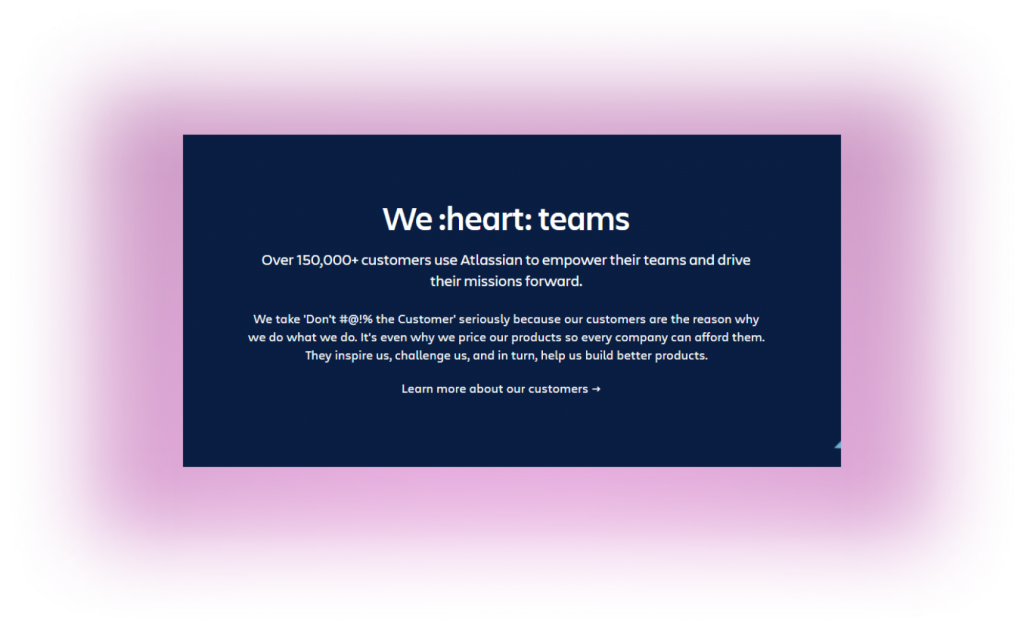
We’ve got passionate words like “empower,” “drive”, and “inspire.” And, again, we’ve got that very casual, youthful attitude with “We :heart: teams” and “Don’t #@!% the Customer.” The latter made me laugh out loud; I don’t think I’ve ever seen an allusion to cursing on a software development website before.
Obviously, this type of language isn’t going to be everybody’s cup of tea. For Atlassian to have chosen this direction for tone of voice, I’d imagine that their target audience consists of young, progressive entrepreneurs who are tired of stuffy corporate culture.
But, remember how I said earlier that different tones of voice could be applied to various forms of content? For instance, we wouldn’t want to write a press release and a blog post the same way? Atlassian understands this quite well, as their press releases are written in a formal, matter-of-fact manner.

Summing Up: 10 Takeaways for Improving Your IT Tone of Voice
- Go undercover and study your target audience. Figure out what tone of voice appeals to them.
- Choose the dimensions of your tone of voice, then narrow it down into specific vibes.
- Use product-reaction testing to validate your tone.
- Create a tone guide for your editorial team.
- Use different tones when the situation calls for it (e.g., a blog post vs. a press release)
- Only use jargon when the audience is “in-the-know.”
- Cut out buzzwords!
- Don’t stuff your content with keywords.
- Write for the reader! Aim to produce informative content & bring something new to the table.
- Consider partnering with a tone of voice marketing and content creation company.
But, wait! We didn’t talk about point #10 yet, have we? I’ll go ahead and fix that right now! Do you want well-written, SEO-friendly content that’s aligned with your marketing strategy and desired tone of voice? This is where we come in: Contenteam is a content creation team, complete with in-house editors, proofreaders, and multiple language departments.
Our priority is to create selling texts that deliver value to the reader and align with your brand. We work with large volumes of text – so you don’t have to worry about hiring on your own team and training them on style standards. Simply send us your requirements, and we’ll take it from there!
Interested in learning more? Shoot us a note, and I’ll be happy to chat with you.

